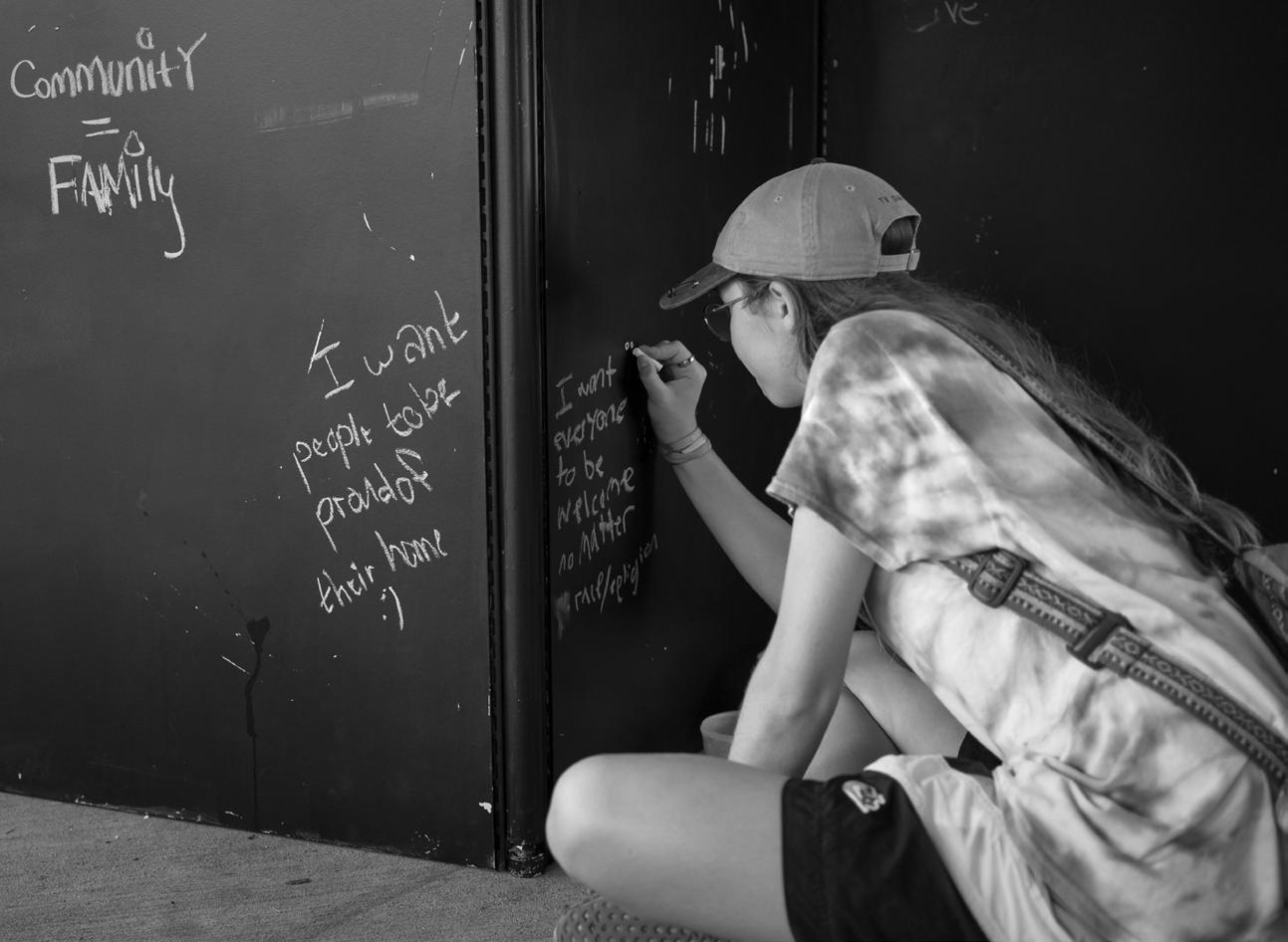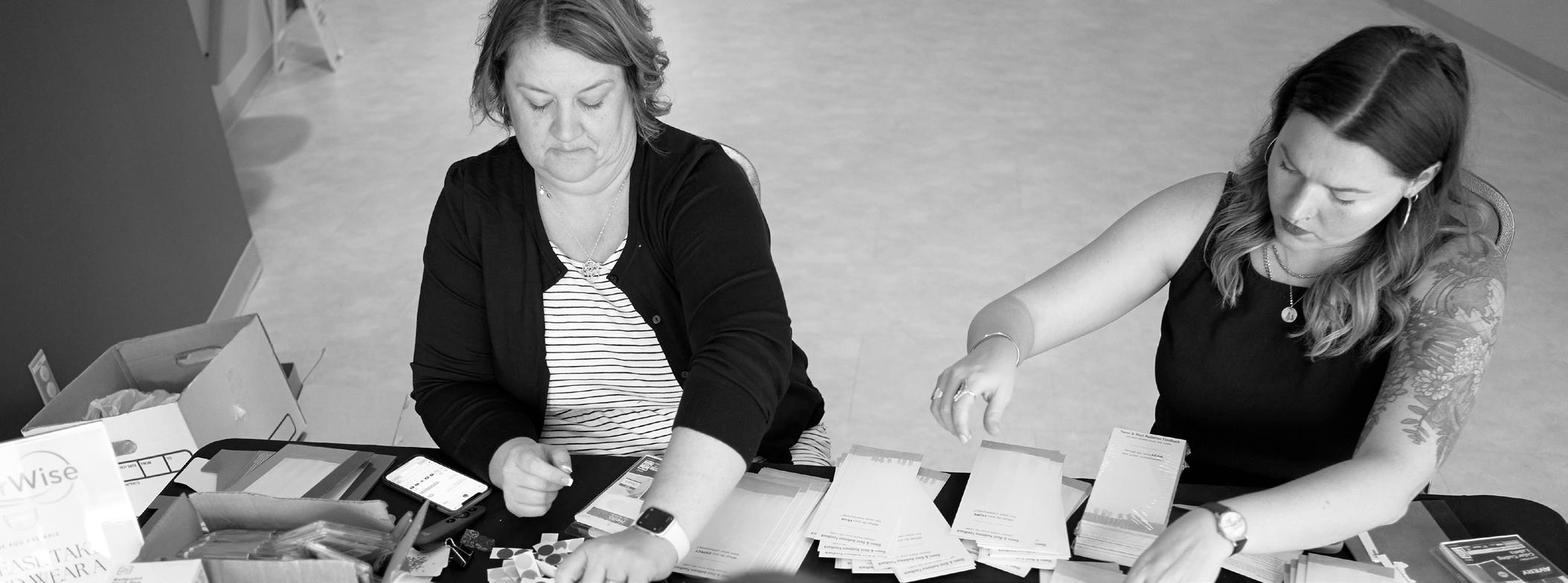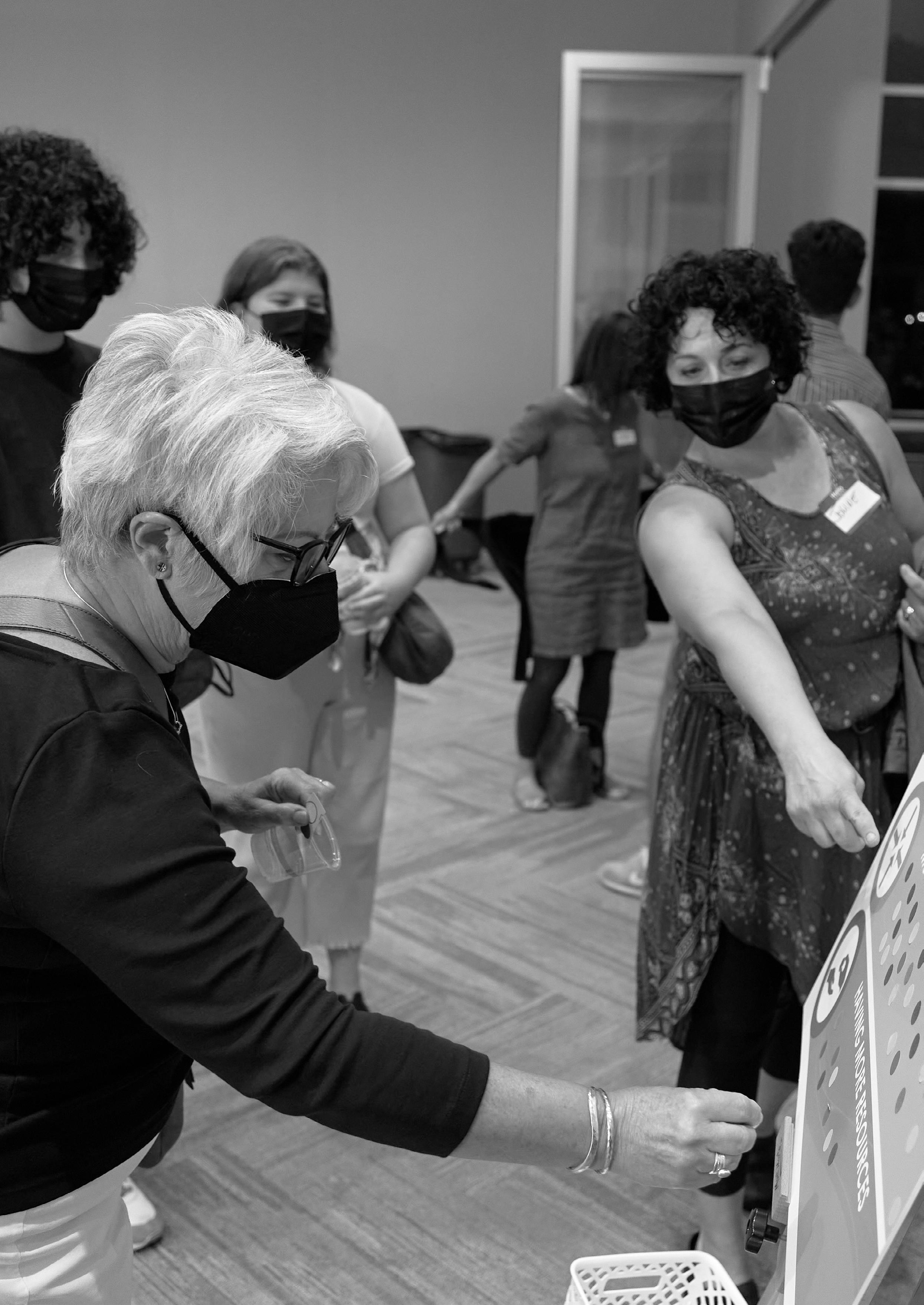
9 minute read
Why Communities Often Fail to Use Creative Advocacy
As we have worked to better understand creative advocacy and the conditions that allow cultural capital to be better absorbed into the fabric of the community, we are reminded that many communities are underprepared to bring about the kinds of change they would like to see. The reasons for this are many and varied, but in one way or another, they regularly manifest themselves as a lack of agency over the material conditions in the community (the hardware) and the mindset and relationships that characterize individuals and organizations within the community (the software).
In order to address this lack of agency, the status quo approach to movement building must be re-imagined. “If we continue to rely on traditional forms and structures of organizing, however, we will never build the scale of power we need,” says the Center for Community Change in their Path to Power model. “The field is currently too dependent on a narrow range of external funding sources, too reliant on paid staff in a way that limits scalability, and too insulated from the potential of technology to recruit a mass base and reach a mass audience.”
Advertisement

Community Trauma and the Inability to Absorb Capital
In our experience, a community that is lacking in agency often finds itself in that state because of some kind of collective, historical trauma. Often this trauma is economic in nature, though, that may not always be the case. In response to trauma, community members predictably and wisely focus on short-term survival and may disengage from broader community transformation. Typically, communities in crisis limit the time and energy devoted to longer-range planning, setting aside complex projects and collaborations. In such environments, the luxury of advocating for the collective future often and understandably takes a back seat to more immediate needs.
Because of the precipitating trauma as well as the response to it, communities in decline experience a loss or imbalance of capital of all kinds — natural, human, cultural, social, political, financial, and built. The collective nature of these conditions inevitably creates an inertia and expectation that compounds itself over time. Eventually, communities lacking in agency come to understand themselves as victims of forces outside of their control. This creates a mutually reinforcing cycle of disempowerment, wherein the mindset of the community actually restricts opportunity, limits visionary thinking about alternative futures, and predictably reinforces unhealthy material conditions at the heart of community life.
On the surface, and in a way that most people can easily observe, communities with imbalanced capitals generate unhealthy symptoms of distress and disinvestment. These outward signs include things like broken windows, deteriorating infrastructure, vacant buildings, blight, and more (what we have above referred to as community hardware). Underlying these visible markers (at the level of community software) is a complex set of invisible and often unspoken conditions that work against achieving balance and making progress.
As people have done throughout history, communities in decline develop a more or less coherent set of shared beliefs, stories, and practices that help them to make sense of their accumulated experience. This collective worldview is complex, differs from person to person, and is composed partially by the stories we are told and partially by the stories we tell ourselves.
It It consists of the ways we organize ourselves, the assumptions we tell each other, the community members we laud (or vilify), the dreams and fears we share, and so much more. Over time, these dominant paradigms produce mental maps that largely determine how residents come to understand the world around them and how stakeholders are expected to operate within that world.
Community Mindset and Creative Advocacy
What we are describing above is what we often refer to as a “community mindset,” and it exists at the heart of all communities. The mindset of a community can empower and encourage its residents to seize control of their futures, make their vision a reality, and mobilize others to advocate for the same. Or, as is often the case in communities limited by an unhealthy mindset, this collection of assumptions can reinforce stakeholder disempowerment, apathy, hopelessness, and other similarly unhelpful frames of mind. In recent decades, many established narratives have attempted to position visionary thinking as the domain of certain institutions and sectors — not communities.
Heavily shaping community mindset is the vast amount of misinformation and false content being distributed, targeted, and organically shared at an alarming rate across a sea of digital channels. Research and whistleblowers alike demonstrate that prevailing communication platforms are built to produce and encourage discord. Due to society’s insatiable appetite for digital media, and the massive amount of resources available to those seeking to shape public
Pamela Rossi-Keen | Member of Genesis Collective, Creative Advocacy Advisor
perception, this propaganda deeply influences the way people understand an issue and how they organize a response. Even well-designed advocacy efforts can be drowned in the noise of misinformation and daily banter, or become buried by profit seeking algorithms, rendering them ineffective at building attention and coalitions. The fundamental and dangerous challenge presented by disinformation is the way it undermines a community’s shared narrative sense of itself.
Creative advocacy, as we understand it, is a commitment to understand, engage, and (when appropriate) transform community mindset in ways that produce greater agency and more vibrancy within the life of a community. While shifting mindsets through creative advocacy cannot solve all the problems that communities face, our experience suggests that it can go a very long way toward affecting productive change at the level of both community hardware and software.
In what follows, we are chiefly interested in highlighting how creative advocacy can help communities reclaim agency over the unproductive, uninformed, or unengaged mindsets that keep them from experiencing vibrancy together. We want to understand and demonstrate how proactive creative advocacy strategies can function as a tool for changing community mindset around an identified matter, shifting both how the community thinks about itself and the way it acts in light of those shifts in thinking. In so doing, we hope to encourage stakeholders to employ creative advocacy strategies to overcome false and unhelpful narratives that predictably accompany community decline while realizing the resources and capacity to grow in self-directed ways as a result.
What is community mindset?
» Beliefs (stated or unstated) about the community
» Attitudes that are common across the community
» Hopes and/or fears of the community
» Stories that get told again and again by members of the community
» Values that are common to the community
» Rules or norms that govern community interaction
Why does community mindset matter to nonprofits?
» To discover and speak life into their stories
» To overcome false and unhelpful narratives
» To promote collective vision and hope
» To amplify and rebalance underrepresented narratives
» To advocate effectively around shared values and vision
» To inspire positive regard and action
Challenges Facing Nonprofits Interested in Creative Advocacy

The problems surrounding the strategy of “creative advocacy” are many. As we have spoken with nonprofit organizations and leaders, we have identified five primary challenges that often prohibit a careful and protracted focus on advocacy within their organizations.
Many nonprofit organizations lack the capacity to enact an advocacy campaign
Nonprofit leaders throw the word “capacity” around quite a bit, generally with very good reason. More often than not, organizations are working well beyond the bounds of their experience and resources. Team members are regularly called on to work in new and unfamiliar situations, programs are often understaffed, and budgets rarely allow for activity deemed elective or uncommon. Simply put, nonprofit organizations — and the systems that support them financially — have normalized working conditions that lack the requisite capacity to do the work at hand. In an environment of scarcity, nonprofit leaders must make shrewd decisions about how to utilize precious financial and human resources. In such situations, creative advocacy is generally (and understandably) viewed as a luxury, even though it may be one of the most effective ways of creating abundance and buy-in for the organization’s work in the long run. As one nonprofit leader recently said, “If your building is on fire, you don’t have time to create a team and tell stories about the importance of saving it. You have to solve the problem the best you can with the resources you have right now.”
Funding for nonprofit work does not often support creative advocacy
Whether nonprofit leaders (or those who fund them) like to admit it or not, we operate in systems that do not always incentivize innovation, creativity, or disruption. Very often, the funding available to nonprofit organizations is restricted in ways that make it hard to do the kind of creative advocacy we are describing in this playbook. As a result, nonprofit leaders must prioritize processes and activities that are more directly focused on generating perpetual funding than addressing root causes, raising community voice, and building community power to push back against the conditions creating such needs in the first place. A leader in the sector once put it this way: “If you can only get funding to build hammers, you either figure out how to create an organization that builds hammers or you fold. It’s as simple as that.”
Fear of public failure
Far more often than not, creative advocacy is intended to be a public activity. Campaigns are generally designed to grow awareness, attract followers, generate publicity, and the like. And, many campaigns are built so that they are attempting to achieve a clear outcome as the result of their efforts. For example, a campaign may seek to gain political support for a project, may intend to forestall undesirable development, or may be focused on attracting funding for a given project. In these and similar instances, the success or failure of the advocacy campaign is inherently public and therefore open to scrutiny, critique, and dissent. For many nonprofit organizations, and given the issues described above about limited capacity and funding, the perceived risk of undertaking such a public effort is deemed to be too great. Even though such organizations may be among the best candidates for organizing advocacy, they often do not see themselves as willing or able to shoulder the inevitable scrutiny that comes along with such public initiatives. And so, in many cases, public advocacy efforts never get off the ground.
Uncertainty about how to maximize campaign effectiveness
As we engage with numerous different kinds of organizations across our region and beyond, we are regularly told that nonprofit leaders recognize that they are not maximizing the potential of the various kinds of media available for spreading awareness about their work. Though we are surrounded by numerous platforms and services that allow us easily to share what we are doing, figuring out how to utilize the effectiveness of such channels is increasingly challenging. Since the success of a given creative advocacy effort may rely heavily on making the most of the benefits of using such media channels, nonprofit organizations who have limited sophistication in this regard may view the matter as too complex, beyond their reach, and psychologically overwhelming. While the desire to conduct a campaign may be present, the perceived barriers to entry are often beyond what nonprofit organizations can bear.

Access to creatives is limited
Although conducting an effective creative advocacy campaign can occur with varying levels of involvement from artists and creatives, we have found that extensive access to such individuals is often required to maximize campaign effectiveness. In at least some cases, however, nonprofit leaders do not know where to begin to identify creatives who can help make their campaign a success. Experience has shown that not every creative is disposed or well-prepared to work alongside a nonprofit organization. It takes a certain kind of creative mind, a unique disposition, and an openness to collaboration that not all creatives or artists possess. For nonprofit organizations who may have had little interaction with the creative community, it can be difficult to know where to start. Simply being interested in working with creatives does not ensure success. Considerations such as culture and work style can make or break this relationship. Given limited resources and time, the notion of trial and error is neither appealing nor possible. Because of this, even the most motivated nonprofit organizations can find themselves unaware of how to connect to mission-aligned creatives who can help bring their campaign to life.
Each of the challenges listed above undoubtedly manifest themselves uniquely in different organizations. They are real and important matters that cannot be simply dismissed or brushed aside. That being said, and in our experience, these matters are often felt by organizational leaders in ways that make them seem more decisive than they need to be. We are hopeful that the remainder of this playbook will help to contextualize some of these problems in a way that grows the confidence and capacity of nonprofit organizations to take the leap into the world of creative advocacy. This is, in our humble opinion, not merely desirable. We believe that the future health and vibrancy of society hinges, in part, on the willingness and ability of nonprofit organizations to invest in more accessible onramps and tangible expressions of what their stakeholders desire for the future of their communities.
Creative Advocacy Advisor



